
It can’t be understated how important the construction industry is to Singapore.
With 77% of the population living in public housing, large residential construction projects are part and parcel of the Singaporean experience, not to mention other developments like ports and business districts.
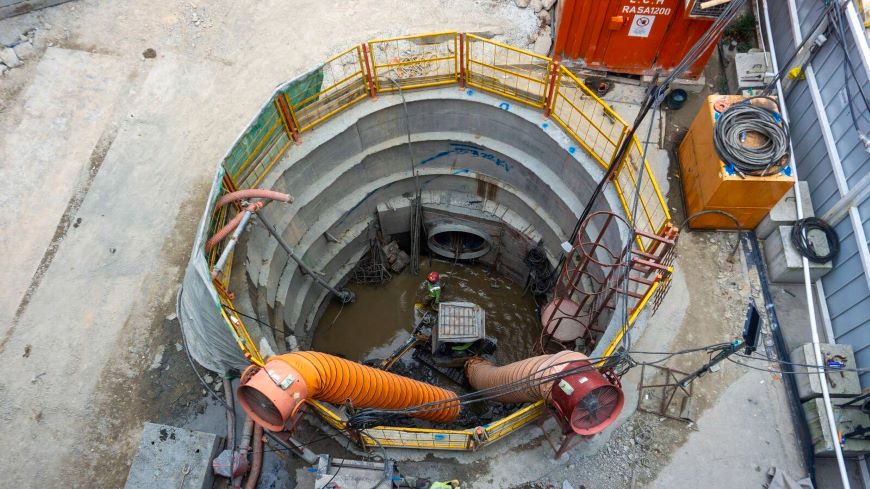
A usual sight at the construction site. Photo credit: Shutterstock
However, the sector has to deal with issues of worker safety, which is something AI can help with.
Enter Ailytics, which developed a video analytics platform to help construction companies and other stakeholders maintain better safety standards on-site.
To catch this solution in action, I visited the Jurong Innovation District’s construction site.
An impossible task
At the site, I’m immediately assailed by a sweltering heat and plumes of dust and smoke. In the distance, I can hear the constant whirring of machinery and deep rumbling of engines.
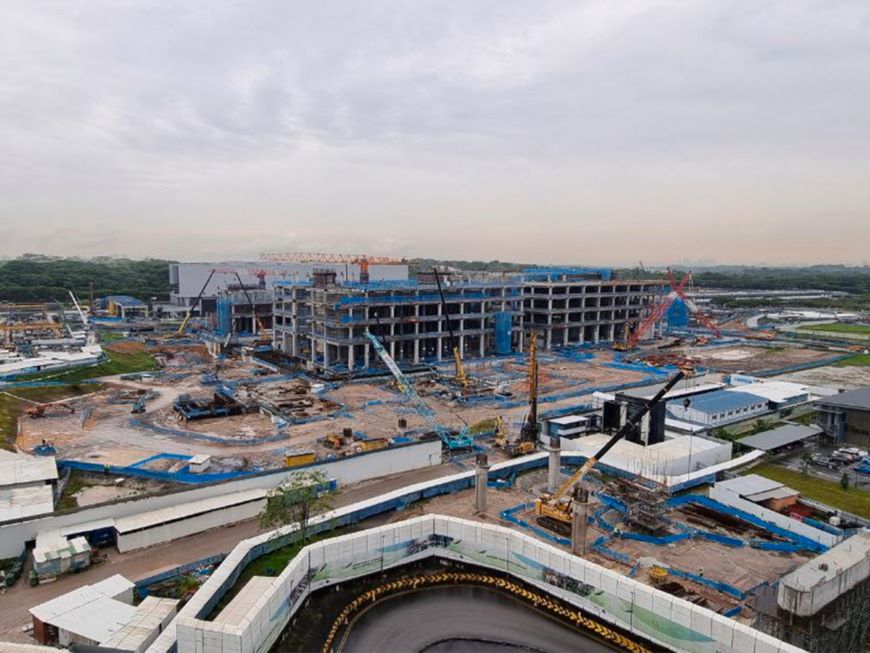
The Jurong Innovation District’s construction site. Photo credit: Ailytics
It’s clear that I’m going to need a guide through this place – I’m technically on Singaporean soil but it feels distinctly foreign as I’ve never stepped foot in a construction site before. Today, that person is Lenard Tan Wei Zhuang, CEO of Ailytics, who will be showing me just what his company’s solution is capable of.
“One of the main goals with this system is to help the industry move forward in a good way,” he tells me.
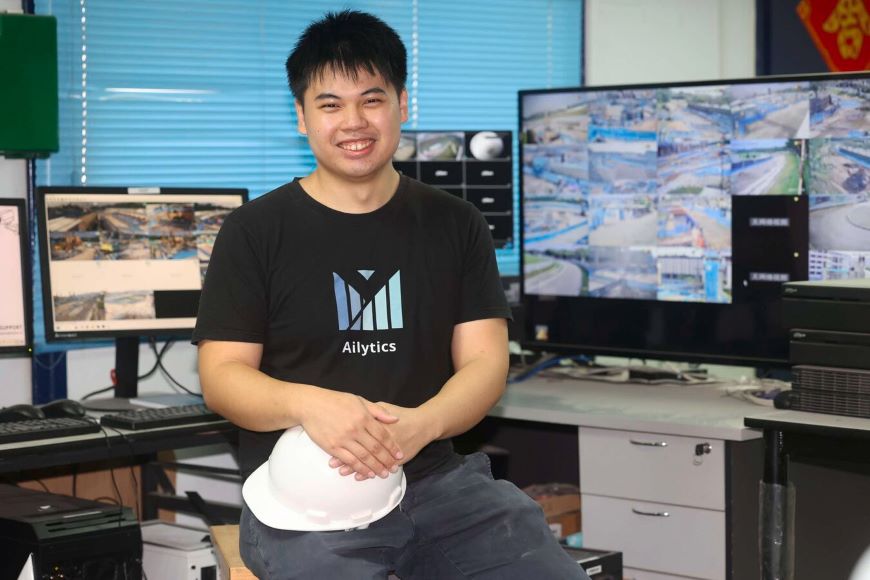
Lenard Tan Wei Zhuang, CEO of Ailytics. Photo credit: Ailytics
One of my original objectives in visiting this site was to see whether I could keep up with its AI system in spotting safety infringements.
Generally speaking, there are three main areas of concern for workers at a construction site: being unsecured near edges, being under heavy loads, and being too close to heavy vehicles and machinery.
Upon arriving at the office, however, I realize that trying to keep up with the AI system would be nearly impossible. More than 90 of the site’s CCTV cameras are equipped to use Ailytics’ AI vision solution. That means that I’d have to pay close attention to 90 different perspectives at the same time.
Even with a large-screen TV, the images are too small – I’d have to squint to make out what some of the workers are doing, never mind important details like their proximity to an exposed edge.
Walking around the site would be an even worse option as it takes around 45 minutes to go through the whole location, Tan points out.
“It’s massive, and you can’t expect to deploy supervisors everywhere,” he adds.
The user perspective
Because it’s so difficult for me to effectively catch these things myself, I spoke to two workplace safety and health officers (WSHOs) to learn more.
One of them, Ryan Woo, points out the same problem I had earlier. There are many cameras but supervisors like him often end up only using a desktop computer screen for observation, which is too small in most cases.
On top of that, having to always keep an eye on several cameras is tedious. “More people, more problems,” he jokes. “If there are 1,500 people on site, then there are 1,500 potential issues that I need to keep looking out for.”
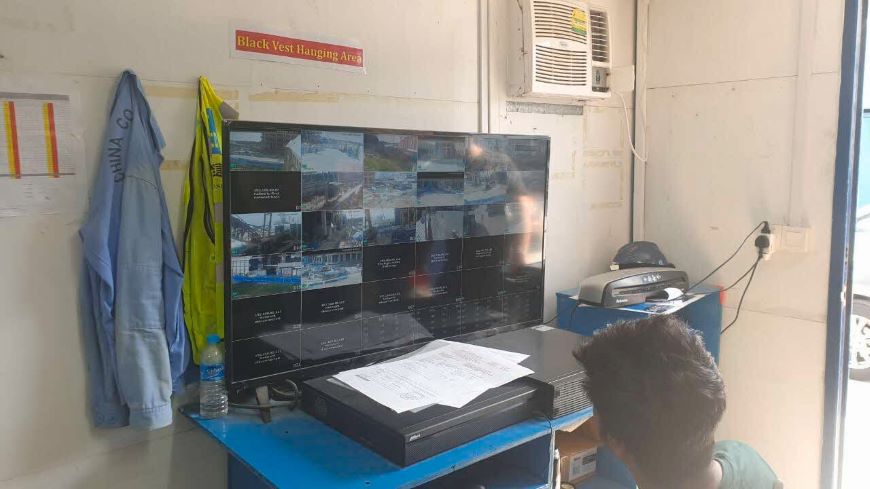
Now imagine having to pay attention to three or four of these TVs. Photo credit: Tech in Asia
The other WSHO, Rajandran S/O Mariappan, points out that this type of monitoring isn’t meant to be the main responsibility of safety supervisors.
“We don’t have that luxury, unless it’s a specific responsibility assigned to someone,” he says. Now that monitoring is automated, it frees him up to act on other responsibilities, such as establishing safety plans and parameters for construction activities.
Additionally, the AI solution has improved the rate at which infractions are caught. Rajandran estimates that there’s been a 70% improvement in spotting workers in unsafe conditions after Ailytics’ system was deployed.
The sum of its parts
While the vision analytics portion of Ailytics’ solution is usually in the spotlight, Tan says that there’s a lot that goes into the overall system to make it effective.
“The AI model comprises about 60% of the whole system. The rest is made up of lots of tuning through software engineering,” he explains. This includes adjusting parameters within the system to mitigate obstacles such as poor connectivity with the cameras, harsh weather, and low-resolution images.
Additionally, the team had to ensure that the overall system could detect small objects at long ranges with lower-end cameras, which is a critical part of the safety monitoring process.
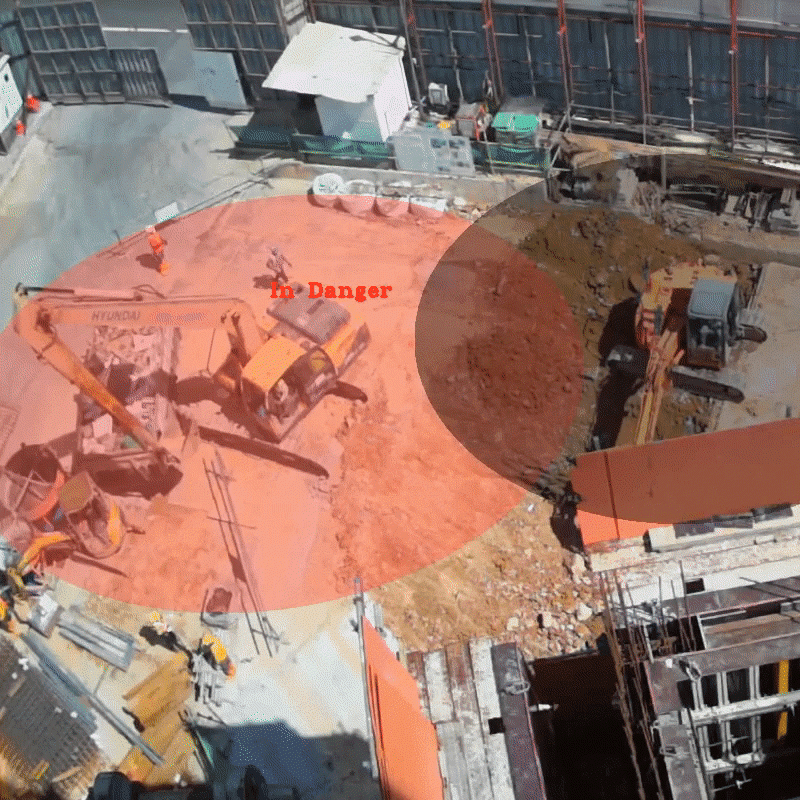
An example of Ailytics’ system catching workers who’ve gone too close to heavy machinery. Image credit: Ailytics
Ailytics also faced difficulty in training the model effectively during the development stage as the industry doesn’t offer much publicly available information to work with, says Tan.
Fortunately, the firm partnered with the Housing and Development Board (HDB) – the statutory board that oversees public housing in Singapore – to get the training data it needed. HDB also helped Ailytics get its foot in the door with major stakeholders.
“The barrier to entry for us was really high as a lot of main contractors aren’t going to spend time with startups like us of their own accord,” Tan shares. “But HDB encouraged these stakeholders to work with us, which gave us access to the sites and helped us carve out time for product iteration and feedback.”
That said, the CEO believes that there’s still much more work to be done, such as tackling misconceptions regarding using AI as a safety tool. For example, some safety officers may think that the system will completely replace their jobs and therefore be against its implementation.
Seeing the road ahead
Wrapping up my day at the work site, I’m heartened to know that Ailytics’ solution has had a tangible impact on the people that can benefit from it. That goes beyond the supervisors – Tan says that on average, there was a 60% to 75% drop in infractions in the three months after the AI system was implemented.
As I leave the office and walk back down the same dusty road, my mind is brimming with possibilities of how these types of AI solutions can have such a positive impact.
Because Ailytics has already established a solid foundation, Tan now has bigger goals in mind for the platform. One of them is to allow for more granular customization in how and what the system can detect in a construction site, allowing for more flexibility in the use cases it’s designed for.
“If there are 1,500 people on site, then there are 1,500 potential issues that I need to keep looking out for”
He’s also considering developing a marketplace where the system’s collected data can be shared so that other companies can train and deploy their own AI models more effectively. Through this marketplace, companies would also be able to monetize these AI models for other customers in the industry without exposing sensitive data, Tan adds.
Lastly, he’s thinking about creating related models for the construction and manufacturing industries as well as for organizations in heavily industrialized sectors – such as oil and gas, maritime engineering, and the military – to help monitor productivity and efficiency levels at work sites and factories.
Still, despite these goals, he’s aware that, ultimately, AI systems like Ailytics’ are just tools, even if they’re highly effective.
“We’ve got to be cautious of over-engineering things. Some tasks are just not meant to be replaced by vision AI and a system like this will never fully replace safety officers on the ground,” says Tan.
This article was first published by TechinAsia and republished with permission.
 A Singapore Government Agency Website
A Singapore Government Agency Website


